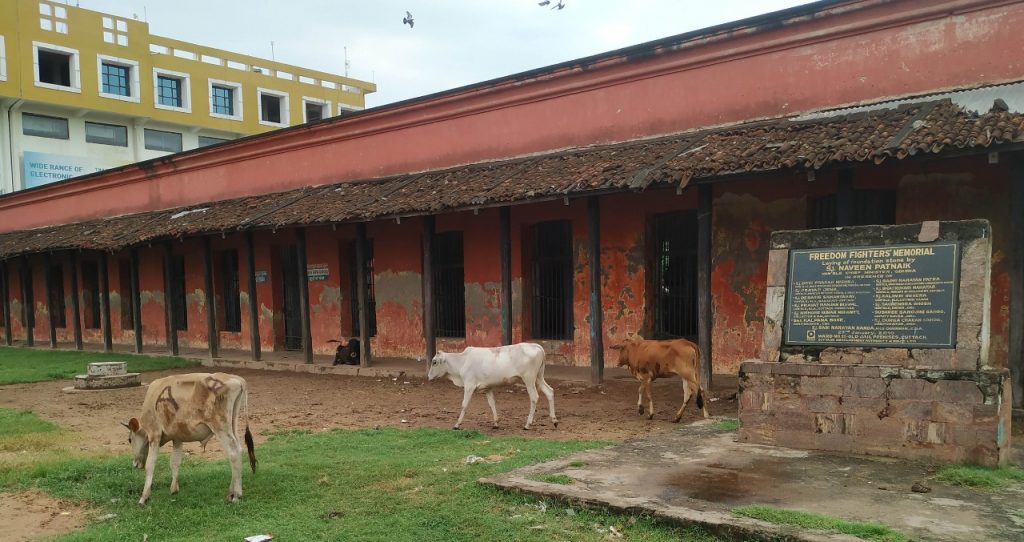The Millennium City occupies a special place in the freedom struggle and it was undoubtedly the nerve centre of freedom movement in Odisha. Besides, many prominent leaders who had joined the struggle for Independence were associated with Cuttack. Orissa POST makes an attempt to present the legacy of Cuttack in the freedom movement:
Swaraj Ashram
Located in Sahebzada Bazar in Cuttack, Swaraj Ashram played a key role in the independence struggle. The Ashram had inspired thousands of people from across Odisha to join the movement against the British rule in India. Top leaders of the freedom struggle used to congregate at Swaraj Ashram and devise strategies to fight the British colonialism. Legendary leaders like Mahatma Gandhi, Jawaharlal Nehru, Netaji Subhas Chandra Bose, Sardar Vallabhbhai Patel and Dr Rajendra Prasad had visited the ashram during the movement.
Meet on Kathajodi riverbank
Kathajodi riverbank here had two historic meetings during the Non-Cooperation Movement. Freedom fighters from Odisha including Utkalmani Pandit Gopabandhu Das, Harekrushna Mahtab, Jadumani Mangaraj, Bhagirathi Mahapatra, Jagabandhu Singh and Mukunda Prasad Das had participated in the Nagpur session of Indian National Congress (INC) that had passed a resolution to launch the Non-Cooperation Movement against the Britishers. Pandit Das had convened a public meeting on the bank of Kathajodi river January 24, 1921 and urged people to participate in the movement. In the same year, Gandhiji had also addressed a public meeting on the riverbank March 23. At least 50,000 people congregated at the meeting to listen to Gandhiji’s speech.
Civil Disobedience Movement
The Civil Disobedience Movement of 1930 had received massive support from the residents of the Millennium City. Cuttack witnessed a complete hartal December 14, 1930 to protest the sealing of Congress office in the city by the British. Many prominent freedom fighters including Malati Choudhury and Lingaraj Mishra were taken into police custody. The residents of Cuttack had observed the Independence Day January 31, 1931 as per the resolution passed in the Lahore session of INC.
Choudhury Niwas
Choudhury Niwas, the ancestral home of prominent freedom fighters Gopabandhu Choudhury, Nabakrushna Choudhury, Rama Devi and Malati Devi at Bakharabad in Cuttack had a special link with the freedom struggle. The National Flag was hoisted at Choudhury Niwas to observe January 26, 1930 as Purna Swaraj Diwas. Gopabandhu Choudhury had launched his historic Labana Satyagraha Yatra to Inchudi from the verandah of Choudhury Niwas. Utkal Gandhi Smaraki Nidhi is now operating from Choudhury Niwas to propagate Gandhian thoughts.
Role of Ravenshaw College
Ravenshaw College which was later upgraded into a university had contributed a lot to the freedom struggle. Many students of this institution had participated in the movement. Ravenshaw was the alma mater of several prominent freedom fighters from Odisha. Incidentally, Ravenshaw had hosted the first meeting of Odisha Legislative Assembly once the country was freed from the British rule.
The old jail
The old jail at Darghabazar in Cuttack had hosted many freedom fighters. The Britishers had set up the jail in 1863. Prominent freedom fighters including Gopabandhu Das, Madhusudan Das and Nabakrushna Choudhury were lodged in this jail. The state government had declared the jail as a memorial in 2010. But, no step has been taken for its preservation.
